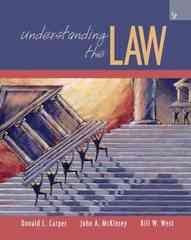Question
Question 1) Which of the following would be the result of an increase in private investment in an economy due to favorable interest rates and
Question 1)
Which of the following would be the result of an increase in private investment in an economy due to favorable interest rates and expectations in the short run?
Output would decrease, aggregate demand would decrease, and unemployment would decrease.
Output would increase, aggregate demand would increase, and unemployment would increase.
Output would decrease, aggregate demand would decrease, and unemployment would increase.
Output would decrease, aggregate demand would increase, and unemployment would increase.
Output would increase, aggregate demand would increase, and unemployment would decrease.
Question 2)
Which of the following is the reason for the lack of long-run trade-off between unemployment and inflation?
Flexible prices and wages in the long run
Flexible wages and fixed prices in the long run
Flexible prices and fixed wages in the long run
Fixed prices and wages in the long run
Fixed prices and flexible wages in the short run
Question 3)
Assume that a movement along the short-run aggregate supply curve increases the price level but decreases the unemployment level in the economy. Which of the following conclusions can be drawn from these outcomes?
There is a long-run tradeoff between inflation and employment.
There is a long-run tradeoff between inflation and unemployment.
There is a short-run tradeoff between inflation and employment.
There is a short-run tradeoff between inflation and unemployment.
There is no trade-off between inflation and unemployment in either the short run or the long run.
Question 4)
An economy in long-run equilibrium experiences a temporary leftward shift in the short-run aggregate supply (SRAS) curve. Which of the following explains the self-adjustment of the economy in the long run?
The positive supply shock will reduce output and increase unemployment, but once wages increase, the output will return to the full employment level.
The negative supply shock will reduce output and increase unemployment, but once wages decrease, the output will return to the full employment level.
The negative supply shock will increase output and decrease unemployment, but once wages decrease, the output will return to the full employment level.
The positive supply shock will reduce output and unemployment, but once wages increase, the output will return to the full employment level.
The negative supply shock will increase output and unemployment, but once wages decrease, the output will return to the full employment level.
Question 5)
In the long run, the aggregate output is primarily determined by the level of resources available in the economy. What does this statement tell us about the shape of the long-run aggregate supply curve?
The LRAS is a vertical line when aggregate output is plotted against price level.
The LRAS is an upward-sloping curve when aggregate output is plotted against price level.
The LRAS is a horizontal line when aggregate output is plotted against units of labor employed.
The LRAS is a horizontal line when aggregate output is plotted against price level.
The LRAS is a vertical line when aggregate output is plotted against units of labor employed.
Thank you. Please explain the answers to me.
Step by Step Solution
There are 3 Steps involved in it
Step: 1

Get Instant Access to Expert-Tailored Solutions
See step-by-step solutions with expert insights and AI powered tools for academic success
Step: 2

Step: 3

Ace Your Homework with AI
Get the answers you need in no time with our AI-driven, step-by-step assistance
Get Started


